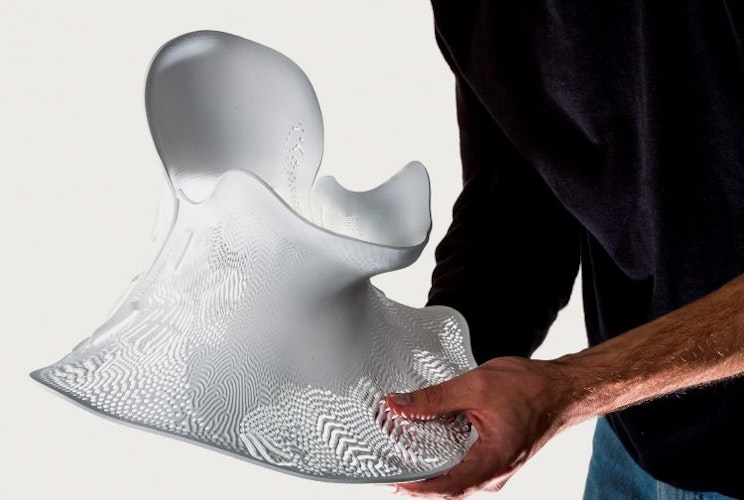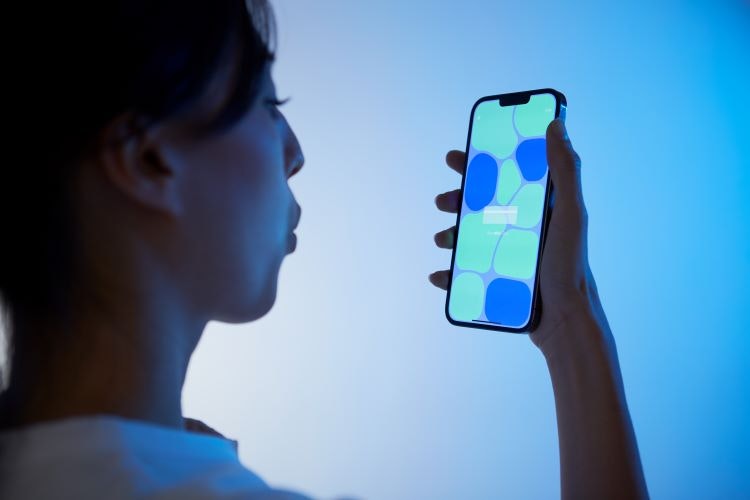NHS Doctor Luke Hale has created a mindfulness app with the potential to become a digital medical device to treat asthma and chronic obstructive pulmonary disease (COPD).
Before qualifying as a doctor in 2016, Hale worked in design research, graphic design and animation. In 2020, during the Covid-19 pandemic, he was shortlisted for London Design Museum’s Beazley Design of the Year award and founded his design and technology company Pi-a shortly after. His shortlisted project, which is now in the Design Museum’s permanent collection, was a biomimetic neck collar, combining 3D scanning, procedural design and 3D printing.

Pi-a aims to create a professional space where designers, developers, scientists and clinicians can work together to find problems in healthcare that require “technological design-led solutions”, says Hale. Working in a hospital during the pandemic, Hale became aware of an acute problem: there was a lack of respiratory therapists and patients appeared to be inconsistent with breathing exercises.
According to Hale, patients are given breathing exercises to prevent chest infections and strengthen breathing muscles after surgery and to help them ween off ventilators after having coronavirus.
In all cases, patients get a plastic box called an incentive spirometer – essentially a piece of exercise equipment for the lungs – to take slow deep breaths into every hour, along with print-out instructions. “I noticed that patients weren’t really keeping the spirometers near them, but always had their phones to hand”, says Hale.

This made him wonder if the functionality of the spirometer and guidance normally given by a respiratory therapist could be transferred onto a phone, resulting in patients being more motivated and likely to do breathing exercises. Hale spent the next year developing the first prototype of the Lungy app alongside Asthma and Lung UK, supported by grants from Innovate UK and the National Institute of Health Research.
“An interactive audio-visual experience”
Lungy is a mindful breathing app that “generates an interactive audio-visual experience” as you breath into it, says Hale. As well as being “more engaging and fun”, he adds that it also provides the user with “real time feedback and tips” in the form of “qualitative data”.
Once users have finished a breathing exercise, the app “abstracts your breathing volume into everyday objects”, Hale explains. Instead of just numbers and data, it lets you know whether you have breathed out the volume of a basketball or a coconut.

Aiming to keep users consistent, Hale included a reminder feature which can be set to any time of day.
Though in its current form Lungy is a wellness app, Hale says that there is potential to develop the breath-measuring smart phone technology into a something that “compliments or even replaces” spirometers and peak flow metres (a device that measures how fast air leaves your lungs when you exhale forcefully).
As a digital medical device, Lungy could help asthmatics to record results more regularly and help to determine the severity of COPD.
There is also a sustainability argument, as spirometers and peak flow metres are made from plastic. A digital solution would mean no CO2 emissions from manufacturing and less plastic waste.
What needs to change?
Hale describes app design as an iterative process which he finds different to any other field of design due to the fact that “it’s never really finished” and can be updated and improved.
Lungy’s current purpose is to help people with stress, anxiety and sleep issues. Hale intends to keep this app as a separate entity to the medical device version, which he calls Lungy Health.
To take the tech to the next level, Hale says it would need to be certified in some way and have “medical device clearance”. While the smart phone tech can recognise and measure breathing, it needs to be tested for accuracy and “calibrated and validated” against “real world values”, Hale explains.

He adds that he would also make design changes to the platform itself to “personalise it to people with respiratory problems”. The idea is that the medical device version would allow users to input their diagnosis and level of function and provide a personalised breathing exercise plan that they can follow.
Another element would be a portal for clinicians where they can remotely track how their patients are doing through the app, keeping on top of improvement or decline in lung function.
Hale is hoping to do clinical studies this year, continuing his work with Asthma and Lung UK and involving patient focus groups to redevelop the platform.
While they will have different functions and the medical device version might have a “slightly cleaner aesthetic”, Hale says that both Lungy apps will have “consistent visual language”.
Can smartphones replace human interaction?
“Smartphones aren’t going away so they do offer a very powerful tool”, he says, although he does not think many companies have “cracked it” in the healthcare sector. Some NHS hospitals still use fax machines and disjointed computer systems despite their being “huge opportunities to use technologies more effectively and efficiently”, according to Hale.
“Digital health will not replace the interaction between patients and clinicians, at least not in the next 50 to 100 years”, he says, adding that in-person interaction has “therapeutic” benefits that you cannot get from digital. That being said, Hale believes that “the nature of healthcare systems” and their limited resources means that developing these technologies goes hand in hand with being able to deliver proper care.

- Design disciplines in this article
- Industries in this article
- Brands in this article








